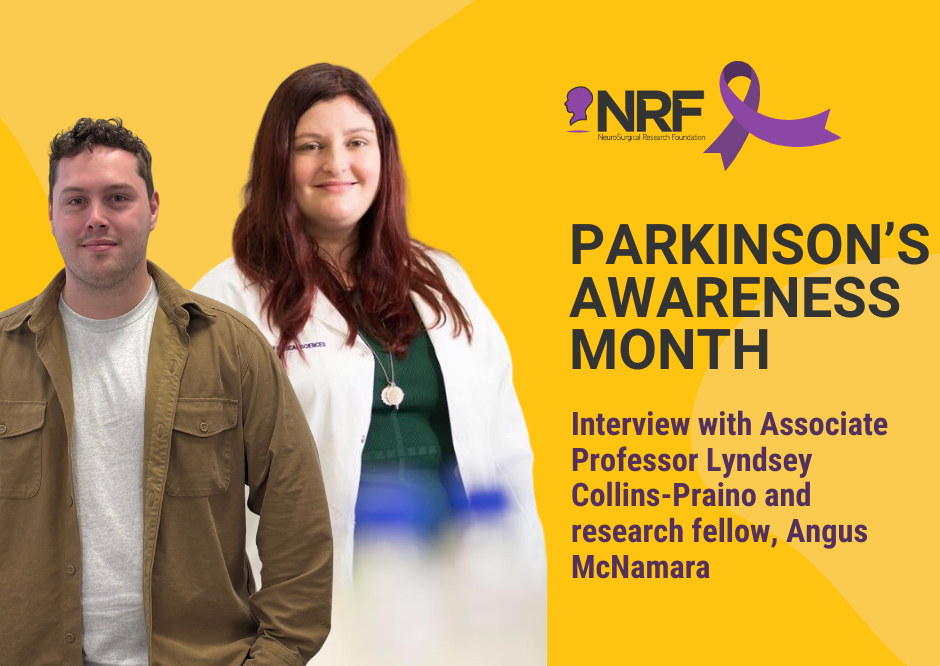How Biomarkers Could Transform Parkinson’s Diagnosis
Researchers are laying the groundwork for a structured, biology-based system that helps clinicians spot Parkinson’s sooner—and act before irreversible damage is done.

For decades, Parkinson’s disease has been diagnosed by what can be seen: tremors, muscle stiffness, and slowed movement. But by the time these symptoms are visible, the underlying brain damage is already significant— and irreversible.
“By the time someone is showing motor symptoms, around 60% of the brain cells that produce dopamine are already lost,” says Associate Professor Lyndsey Collins-Praino, Head of the Cognition, Ageing and Neurodegenerative Disease Laboratory (CANDL) Neurodegenerative Disease Research Group. “That’s a huge hurdle for effective treatment.”
That late-stage diagnosis problem is what researchers are now working to solve—by building a clearer, biology-based framework that can detect Parkinson’s earlier and guide clinicians toward more accurate decisions, sooner.
Over the past decade, scientific understanding of Parkinson’s has shifted from a purely clinical definition to one grounded in biology. Biomarkers—measurable biological signals found in blood, cerebrospinal fluid, imaging, or genetics—are now being used to track the disease, even before visible symptoms appear.
“In Alzheimer’s disease, a biological definition using biomarkers helped advance standardise diagnosis and pushed the field forward,” says Collins-Praino. “We’re now seeing that same momentum in Parkinson’s.”
The next step is turning these research insights into practical clinical tools.
“Ultimately, we want to build something that medical professionals can actually use,” explains Angus McNamara, a research fellow in the Cognition, Ageing and Neurodegenerative Diseases Laboratory. “A structured, evidence-based system that helps them recognise early risk factors—whether that’s subtle cognitive changes, mood symptoms, sleep disturbances, or underlying biological changes.”
Such a framework wouldn’t rely on a single test or signal. Instead, it would integrate multiple layers of information—patient history, symptom clusters, imaging results, and biomarker data—into a tiered model that could support earlier referral, further investigation, or even risk-based monitoring before diagnosis.
The goal is to remove the guesswork. A clearer framework could reduce rates of misdiagnosis, currently estimated at around 20%, and help distinguish Parkinson’s from lookalike conditions that require very different care approaches.
“We want to get to the point where a GP sees a patient with non-specific symptoms and says, ‘There’s enough here to explore further,’” McNamara says. “That doesn’t happen consistently today—but it could.”
While public campaigns for other conditions, like stroke, have shown how simple frameworks can guide faster action, researchers say Parkinson’s needs its own, more nuanced version, grounded in biological evidence but accessible in everyday clinical settings.
“There’s real potential here to create a scalable, proactive approach to diagnosis,” says Asso. Prof. Collins-Praino. “Not just for specialists, but for general practitioners and frontline clinicians, who are often the first point of contact.”
Work is already underway to identify which biomarkers are most reliable, how they change over time, and how they relate to individual risk. Researchers hope to build systems that don’t just diagnose, but help predict how Parkinson’s might progress in each person.
It’s a big shift—from reactive care to proactive identification. But with the right tools, that shift could dramatically improve patient outcomes.
“Early action makes all the difference,” says Asso. Prof. Collins-Praino. “And it starts with giving clinicians a clearer roadmap to follow.”




